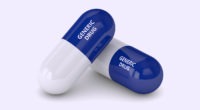AAM Recommends Ways To Tackle Generics Shortages
The Association for Accessible Medicines (AAM), which represents generic-drug and biosimilar developers and manufacturers, has issued a white paper that outlines recommendations to address shortages of generic drugs and ways to ensure sustainable supply.
Shortages of drugs, in particular some key anti-cancer generic drugs, have made the headlines recently, and the Association for Accessible Medicines (AAM), which represents generic-drug and biosimilar developers and manufacturers, issued a report to outline the causes of these shortages and to make recommendations on how to ensure supply.
Market and manufacturing challenges in generics
Although drugs in shortage affect a relatively small percentage of the overall drug supply, the AAM report says that there is evidence that suggests that some generic drugs may be particularly susceptible to drug shortage due to challenges facing the generic-drug market. Overall, roughly 3% of brand-only markets and 4-6% of generic/brand and generic-only markets are impacted by drug shortages, according to data cited in the report. However, the AAM report points out that given the highly competitive and low margins in the generic-drug industry, compounded with external issues, including disruptions in the supply chain, regulatory delays, or changes in competitive intensity, can make producing certain products financially unsustainable. Those underlying issues, along with pricing pressures reflecting declining prices for certain generic drugs, limits the financial viability of certain generic drugs, which in turn, has caused the number of registered manufacturing sites producing certain drugs to decline. Generic product discontinuations have numbered over 3,000 since 2010 and appear to be on the rise, according to data cited in the AAM report.
While each drug shortage is unique, the AAM report says that “most stem from the increasing fragility of the generic-drug market.” It says that this fragility is caused by the following: (1) market and pricing factors that undermine the sustainability of low-cost generic manufacturing; (2) government policies that compound challenging market dynamics, which leave generic markets vulnerable to shortage; and (3) regulatory and manufacturing challenges.
The AAM report highlights how price deflation in the generic-drug market has made certain generic drugs vulnerable to shortage. In the past five years, the total value of all generic sales fell by $6.4 billion due to higher-than-usual price deflation, according to the AAM report. The report notes that although generic-drug prices have historically declined, the last few years have yielded particularly high rates of price deflation caused by consolidation among generic-drug-buying organizations. The report points out that three hospital/clinic group purchasing organizations control roughly 90% of all generic medicine purchasing for hospitals/clinics. In the retail market, three purchasing consortiums (wholesaler/retail chain combinations) collectively control 90% of the retail prescription-drug market. This concentrated purchasing power places downward pricing pressures on generic-drug manufacturers. At the same time, the rate of entry of new generic drugs has slowed, thereby placing greater pressure on generic-drug manufacturers to sustain producing lower-margin generic drugs that they may been able to do in the past.
AAM’s recommendations to address generic-drug shortages
The AAM outlined several ways to address drug shortages. To ensure a sustainable generic drug market, AAM is recommending the following actions as outlined below.
• Update the generic drug inflation penalty under Medicaid, the US government healthcare program for low-income individuals, to align with the inflation penalty included in the Inflation Reduction Act (IRA), legislation signed into law in the US in 2022, which outlined several drug-pricing reform measures. The IRA applies the inflation penalty to single-source generics and gives the US Department of Health and Human Services authority to exempt products in or at risk of shortage. AAM says applying this to the Medicaid inflation penalty would more appropriately address the unique features of the generic-drug market.
• Expand the drug-shortage exemption of the IRA to exempt drugs that are transitioning out of shortage.
• Speed new generics to market through legislation that enables generic manufacturers to receive key quantitative and qualitative formulation information from the US Food and Drug Administration (FDA).
• Ensure that drug plans under Medicare, the US government healthcare program for individuals 65 or older, cover and encourage the use of new generics and biosimilars.
• Amend the 340B drug pricing program (a US government program under which manufacturers participating in Medicaid agree to provide outpatient drugs to certain covered entities at significantly reduced prices) to exempt low-cost generics or adjust the ceiling price required of generics.
To increase reserves of critical medicines, the AAM recommends the following:
• Review the FDA Essential Medicines List and consider updating and adapting it to support a drug-shortage stockpile and reserve capacity program.
• Create reserve capacity supply modeled after the Strategic National Stockpile program to ensure access to essential medicines during national disasters, pandemics, or significant drug shortages.
• Create incentives for hospitals to purchase reserve supply at predictable, fixed-price multi-year contracts.
To increase generic-drug manufacturing capacity, AAM recommends providing targeted federal grants or contracts, or other direct assistance, to generic manufacturers with excess manufacturing capacity to upgrade and update existing manufacturing lines; build new lines in existing facilities; or build new facilities to provide additional capacity. AAM says that these investments should focus on already existing excess capacity, rather than manufacturing for new generics, with a focus on generic medicines most vulnerable to shortage.
To reduce regulatory and manufacturing challenges, AAM is making the following recommendations as outlined below.
• Empower the FDA Drug Shortage staff to engage with the staff of FDA’s Center for Drug Evaluation and Research and FDA’s Office of Regulatory Affairs during the inspection planning process prior to the actual inspection to work with manufacturers and build on their track record of successfully mitigating shortages.
• FDA should improve transparency regarding the status of applications and inspections to allow generic manufacturers to properly project and plan for manufacturing schedules of drugs in shortage.
• FDA should enhance the expedited resolution pathway for drugs in shortage by utilizing alternative inspection tools (e.g., remote regulatory assessments) if inspection status is the only remaining barrier to approval.
• Ensure that FDA guidances do not contain policies that will contribute to drug shortages or prevent/discourage submission of applications for products in shortage. AAM says that FDA should consider the impact of draft and final guidances on products susceptible to shortages and review guidances that may contribute to shortages or that may delay the submission of applications that could resolve drug-shortage situations.
• Ensure that new and updated product-specific guidances do not block the expedited approval of needed generics. AAM says that the approval standards for generic products are often an evolving process, and that such standards may change multiple times during the development process, thereby resulting in delays. AAM recommends that instead of delaying the approval of a generic application (for which FDA has already approved other generics), FDA should permit generic sponsors to comply with new or updated approval standards changes as a post-marketing commitment (as currently marketed generic products would do). AAM says that, particularly in the case of products in shortage, FDA should apply these changes flexibly depending on the public health impact.
• Review shelf-life extension programs for products in critical supply or shortage.
• Exercise and communicate appropriate enforcement discretion on an as-needed basis for products at risk of drug shortage in the implementation of serialization requirements under the Drug Supply Chain Security Act to allow products to continue to enter the supply chain and avoid shortages.
• Streamline regulatory processes to expedite facility reviews. For example, AAM suggests that FDA should expand cooperation with a manufacturer to review the facility and technology-transfer processes.
• Direct the Drug Enforcement Administration, the US federal body regulating controlled substances, to more quickly respond to manufacturer requests for quota adjustments.







